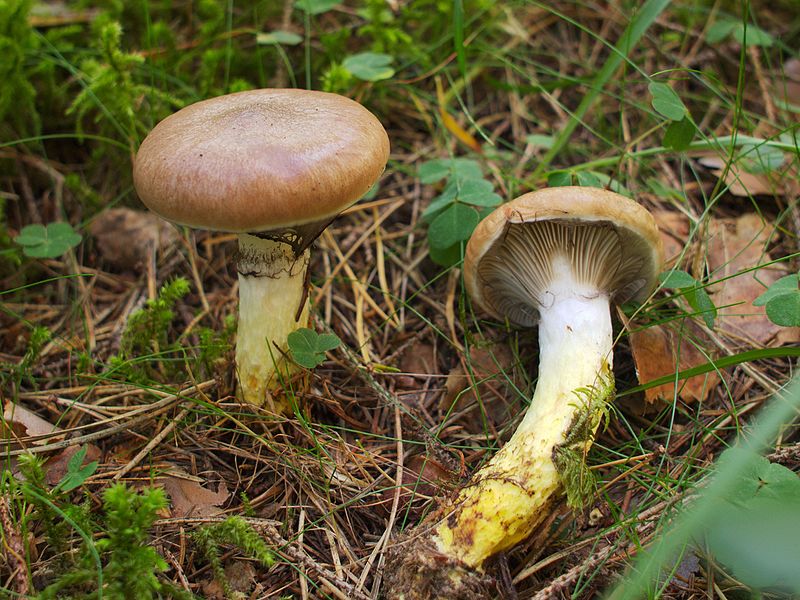Native to North America, slimy-spike cap can be found singly or scattered from summer  through fall in conifers woods, especially under spruce, pine, and fir trees. It belongs to the group of mushrooms known as Boletes but unlike the most of the typical members of the group it has gills rather than tubes. The mushroom is 2/5 to 5 inches tall with a cap two to four inches across. The fleshy cap is hemispherical at first but flattens out with maturity, and may become flat. It has an inrolled margin and is gray or brown with a hint of violet when young but may blacken in old age. Young mushrooms are covered with a mucous veil which breaks leaving a ring on the stem. The thick grills are widely spaced and run down the stem. The firm stem is up to four inches high and is white tinged with gray at the top, often yellow at the base. The spore are blackish brown.
through fall in conifers woods, especially under spruce, pine, and fir trees. It belongs to the group of mushrooms known as Boletes but unlike the most of the typical members of the group it has gills rather than tubes. The mushroom is 2/5 to 5 inches tall with a cap two to four inches across. The fleshy cap is hemispherical at first but flattens out with maturity, and may become flat. It has an inrolled margin and is gray or brown with a hint of violet when young but may blacken in old age. Young mushrooms are covered with a mucous veil which breaks leaving a ring on the stem. The thick grills are widely spaced and run down the stem. The firm stem is up to four inches high and is white tinged with gray at the top, often yellow at the base. The spore are blackish brown.
The common name and appearance of the mushroom is understandably a turn off to many people but slimy spike cap is edible and considered a good addition to soups and stews. The slime and base of the stem, however, should be removed promptly after collecting.
The generic name, Gomphidius, comes from the Greek word gomphos meaning a large concial nail or bolt and refers to the fruiting body. The specific epithet glutinosus, comes from the Latin word meaning glutinous and refers to the sticky nature of the mucous that covers the fruiting body.
Photo Credit: Wikimedia, Tommi-Nummelin